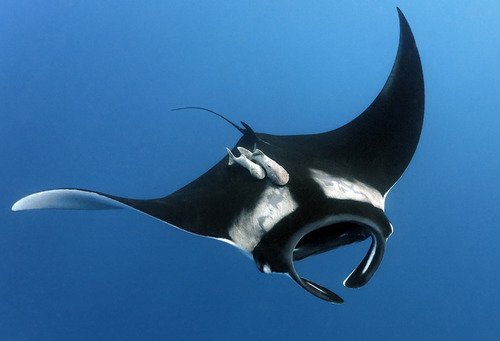A 2016 study on giant mantas investigated whether elasmobranchs could be classed as self-aware. Giant mantas possess the hugest brains of all fish species and they feed in large groupings indicative of complex social interactions. The study utilized the a mirror test considered a reliable self-awareness indicator for such species as bonobos, chimpanzees, orangutans, gorillas, bottlenose dolphins, magpies and elephants. No fish species had passed this test. Mantas gave selective attention to the mirror by displaying significantly more repetitive movements and observing their underside in the mirror and bubble blowing. Mantas can also change their color when a new individual approaches, but this was not observed when they were exposed to the mirror. The results provided evidence of prerequisites for self-awareness and calls into question the ethics of many practices in current fisheries. The giant manta ray are a vulnerable species, but nevertheless 1,000 giant mantas are thought to be culled yearly for their meat and gill rakers (used in Chinese medicine).
Peace @ClumsySilverDad
